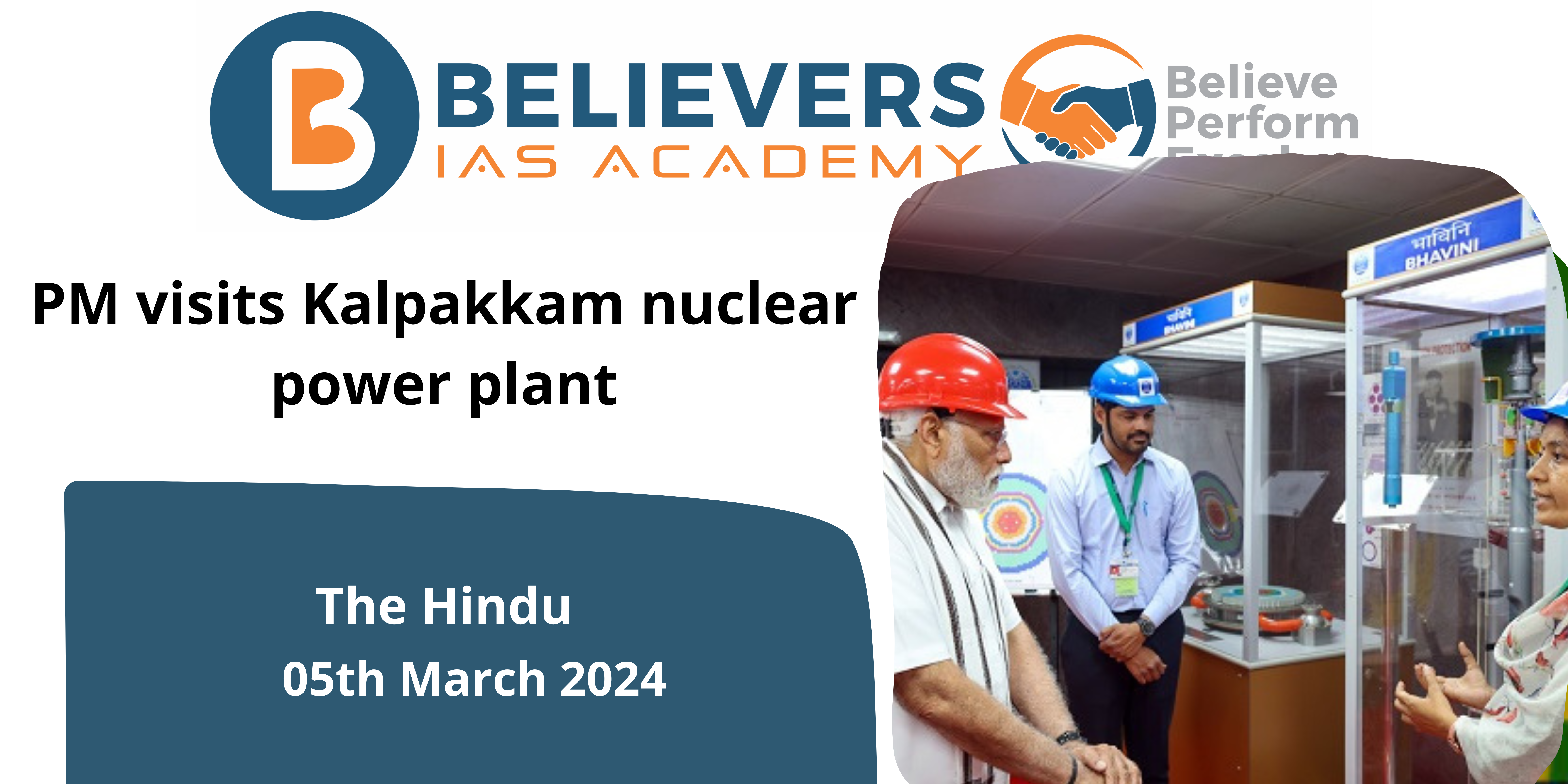PM visits Kalpakkam nuclear power plant
Context:
Prime Minister Narendra Modi observed the commencement of “core loading” at India’s inaugural indigenous Fast Breeder Reactor (500 MWe) located in Kalpakkam. This significant event marks a milestone in India’s nuclear energy endeavors.
Relevance:
GS-01 (Mineral & Energy Resources) GS-03 (Nuclear Technology)
Key highlights:
- India has cultivated comprehensive capabilities throughout the nuclear fuel cycle. The establishment of Bhartiya Nabhikiya Vidyut Nigam Ltd. (BHAVINI) in 2003 highlights India’s commitment to advancing nuclear technology, with the Prototype Fast Breeder Reactor (PFBR) serving as a pinnacle achievement.
- The PFBR stands as a testament to India’s indigenous nuclear prowess, as it has been entirely designed and constructed domestically by BHAVINI, with contributions from over 200 Indian industries.
- Upon commissioning, India will become the second country globally, following Russia, to operate a commercial Fast Breeder Reactor. This achievement signifies India’s emergence as a significant player in the global nuclear energy landscape.
What are breeder reactors?
- A breeder reactor is a type of nuclear reactor that produces more fissile material than it consumes during operation.
- This is achieved by maintaining a high neutron economy, allowing for the creation of additional fissile fuel through the irradiation of fertile materials such as uranium-238 or thorium-232.
- In essence, breeder reactors “breed” fuel for subsequent use.
- Fast breeder reactors (FBRs) utilize fast, unmoderated neutrons to efficiently breed fissile plutonium, and potentially other transuranic elements, from fertile uranium-238.
- The fast neutron spectrum also enables the breeding of fissile uranium-233 from thorium, providing flexibility in fuel options.
Prototype Fast Breeder Reactor (PFBR):
- The Prototype Fast Breeder Reactor (PFBR) is a notable example of this technology, currently under construction at the Madras Atomic Power Station (MAPS) in Kalpakkam, India.
- Designed by the Indira Gandhi Centre for Atomic Research (IGCAR), the PFBR builds upon the knowledge gained from operating the lower-power Fast Breeder Test Reactor (FBTR).
- The Kalpakkam PFBR is specifically designed as a sodium-cooled fast reactor, utilizing uranium-238 to breed plutonium.
- The excess plutonium (or uranium-233 in thorium reactors) produced by each fast reactor can be utilized to establish additional reactors, thereby expanding India’s nuclear capacity to meet its energy requirements.
Nuclear power in India:
- Nuclear power ranks as the fifth-largest electricity source in India, following coal, gas, hydroelectricity, and wind power.
- India operates 22 nuclear reactors across 8 power plants, boasting a combined capacity of 7,380 MW as of November 2020.
- In the fiscal year 2020–21, nuclear power contributed 3.11% to India’s total electricity generation, amounting to 43 TWh.
- Currently, India has 10 additional reactors under construction, with a combined capacity of 8,000 MW, as part of its efforts to expand nuclear power generation.
- Despite aspirations to reach a nuclear power capacity of 63 GW by 2032, India has faced challenges, including anti-nuclear protests sparked by the Fukushima disaster in 2011.
- India is exploring advancements in thorium-based fuels as part of its long-term nuclear power strategy, aiming to develop a prototype reactor utilizing thorium and low-enriched uranium as part of its three-stage nuclear power program.



